San Francisco (1936 film)
8.6 /10 1 Votes
100% Rotten Tomatoes Genre Drama, Musical, Romance Duration Country United States | 7.4/10 IMDb Budget 1.3 million USD Language English | |||||||||||||||||||||||||||||||||
 | ||||||||||||||||||||||||||||||||||
Director W. S. Van Dyke, D. W. Griffith Release date June 26, 1936 (1936-06-26) Directors W. S. Van Dyke, D. W. Griffith Cast (Blackie Norton), (Mary Blake), (Father Mullin), (Jack Burley), (Mat) Similar movies San Andreas , Interstellar , Pompeii , Titanic , Earthquake , Kingdom of Heaven Tagline She Fell In Love . . . with the toughest guy on the toughest street in the world ! | ||||||||||||||||||||||||||||||||||
san francisco earthquake
San Francisco is a 1936 musical-drama directed by Woody Van Dyke, based on the April 18, 1906 San Francisco earthquake. The film, which was the top-grossing movie of that year, stars Clark Gable, Jeanette MacDonald, and Spencer Tracy. The then very popular singing of MacDonald helped make this film a hit, coming on the heels of her other 1936 blockbuster, Rose Marie. Famous silent film directors D. W. Griffith and Erich von Stroheim worked on the film without credit. Griffith directed some of the mob scenes while von Stroheim contributed to the screenplay.
Contents
- san francisco earthquake
- San francisco official trailer 1 clark gable movie 1936 hd
- Plot summary
- Production
- Music
- Box office
- Academy Awards
- References

San francisco official trailer 1 clark gable movie 1936 hd
Plot summary
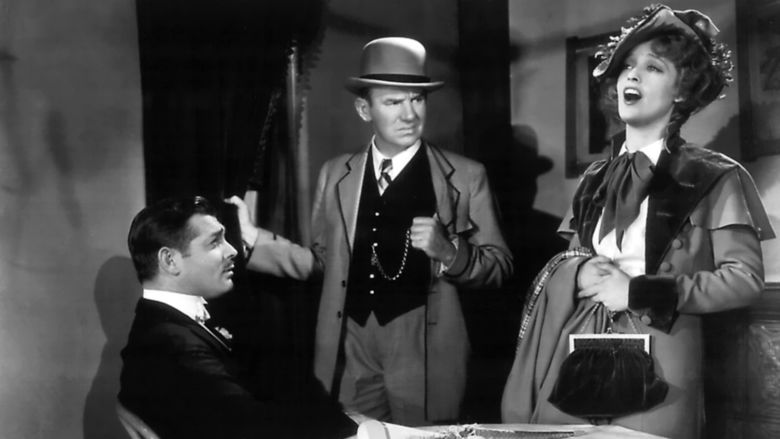
The film opens with two men in boxing gloves and trunks sparring vigorously. One knocks the other squarely down, concluding their session. Changing out of their exercise gear, the latter dons a natty suit, the former a priest's collar.
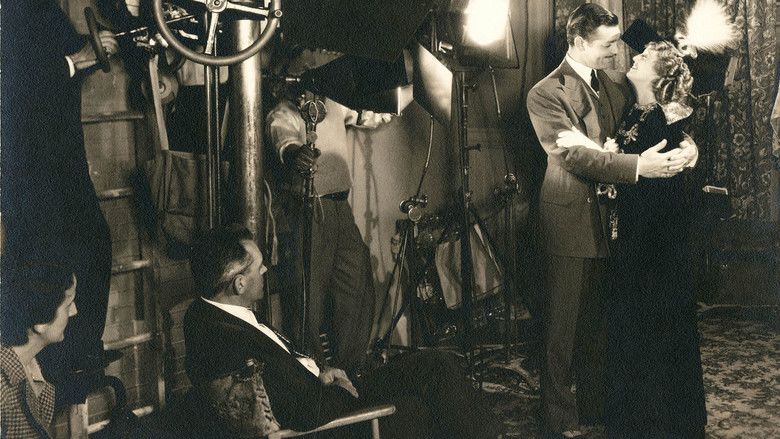
The first man is "Blackie" Norton (Clark Gable), a saloonkeeper and gambler. He owns the Paradise Club on Pacific Street in the notorious Barbary Coast. The other is Blackie's childhood friend, Father Tim Mullen (Spencer Tracy), a Roman Catholic priest.
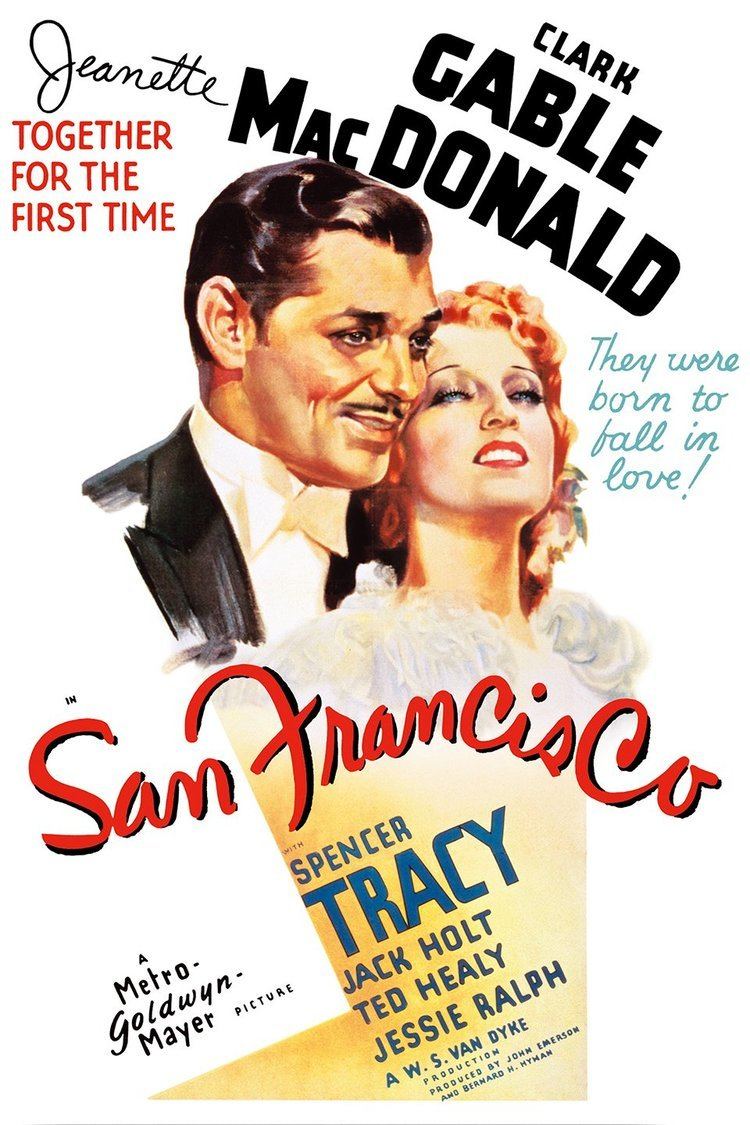
Blackie hires Mary Blake (Jeanette MacDonald), a promising, but impoverished, classically trained singer from Benson, Colorado. She becomes a star attraction at the Paradise, especially for singing "San Francisco" (a song composed for the movie, which became one of the city's official anthems). The club piano player, "The Professor" (Al Shean), can tell Mary has a professionally trained voice. Mat (Ted Healy), Blackie's good friend at the Paradise, wisely predicts that Mary is not going to stay on the "Coast".
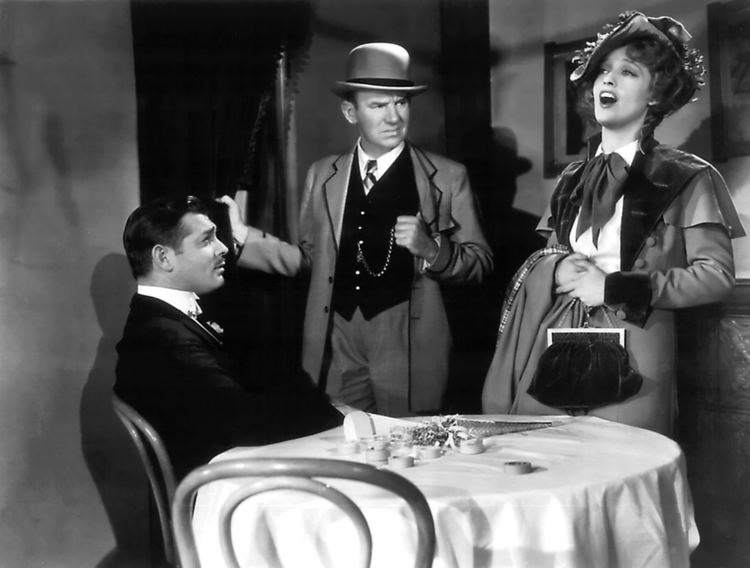
Father Tim makes several attempts to reform Blackie, while the other nightclub owners urge him to run for the San Francisco Board of Supervisors in order to protect their crooked interests. Encouraged by Father Tim, who believes Blackie can use the supervisor position to implement reform, Blackie decides to run for office. Despite Father Tim's best efforts, Blackie remains a jaunty Barbary Coast atheist, although Blackie secretly paid for the new organ in Father Tim's church.
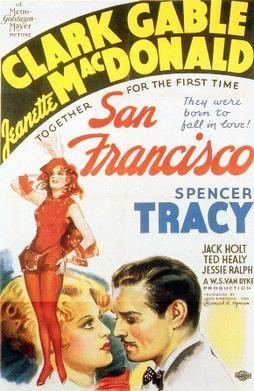
Blackie's feelings for Mary intensify, but complications arise when she is offered an opportunity to sing in the opera. Although she initially refuses to break her contract with Blackie, she later leaves the Paradise Club due to the overtly sexual manifestation of Blackie's feelings for her.
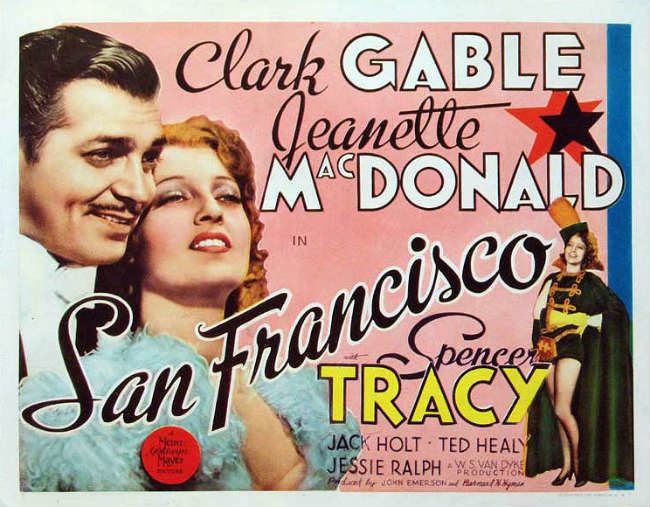
Mary is hired by the Tivoli Opera House on Market Street. There she becomes involved with Nob Hill scion Jack Burley (Jack Holt). Blackie wants to stop Mary singing at the Tivoli: he arrives the night of her premiere with a process server in tow to shut down the show. However, when he hears her sing he decides not to stop the opera. After her performance, Blackie visits Mary in her dressing room. Realizing she still loves him, Mary forwardly asks him to marry her. Blackie agrees, but their reunion is soon interrupted by Burley, who had proclaimed his love for Mary and proposed to her prior to the show. Blackie, seeing Burley as competition for Mary's affections, is happy to tell him of their intent to marry. However, as Blackie gloatingly tells Burley of their plans, it becomes clear that Blackie intends to take Mary away from the Tivoli and put her back on stage at the Paradise. Burley appeals to Mary, but Blackie presents Mary with an ultimatum by asking if she wants to marry him or stay at the Tivoli.
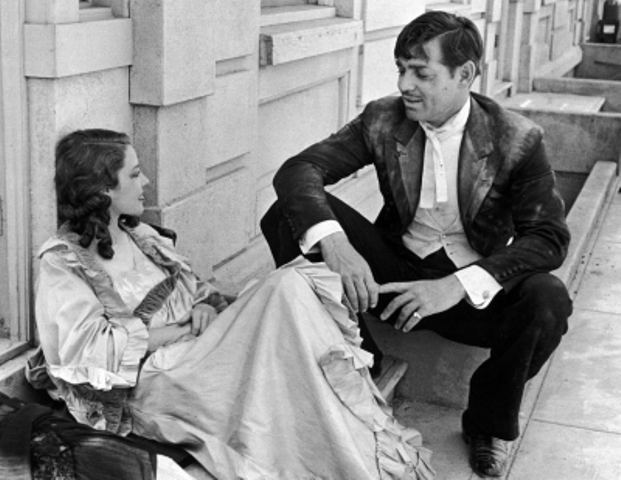
Mary's choice is to return to the Paradise. Backstage, before the opening night of her return performance, she asks Blackie if they can set the date for their wedding. Blackie agrees, but wants to postpone getting married until after the election. Father Tim drops in, and is angered by Mary's skimpy stage costume. He defies Blackie to put her on the stage in front of the rowdy Paradise audience. Mary observes Blackie's reaction to Father Tim's statements, and decides to leave with the priest after Blackie strikes him in the face.

Mary goes back to Burley and eventually meets his mother (Jessie Ralph) at her Nob Hill mansion. In a private conversation, she confesses her unworthiness, but Mrs. Burley informs Mary that she started out in 1850 as Massie, a simple washerwoman in Portsmouth Square. Mrs. Burly also empathizes that she also once had a "Blackie" in her younger days, but chose to marry the more steadfast elder Burley. This cements Mary's decision to accept Burley's proposal of marriage.

It is now the evening of April 17, 1906. Burley has called in some favors and had the San Francisco Police Department raid the Paradise, destroying its gambling equipment and running off the patrons. Blackie, distraught about the future of his club, ends up at the city's annual Chickens Ball. Mary and Burley are in attendance. After performances by acts from the other Barbary Coast clubs, the MC requests the Paradise's entry. When no one steps on stage, Mary, just having learned of the club's closing, enters the Chickens Ball competition for the Paradise. She rouses the audience to join in a chorus of "San Francisco", and wins. However, Blackie angrily refuses the prize money, tossing the prize cup and gold coins to the stage floor. He angrily states that Mary had no right to sing on behalf of his club. Embarrassed, Mary is about to leave the ball with Burley.
Then, at 5:13 a.m. April 18, 1906, the earthquake hits the city. The city is devastated and hundreds are killed.
As Blackie wanders the city searching for Mary, he comes upon Mat, who was injured at the destroyed Hall of Justice on Washington Street. A nurse indicates to Blackie that Mat is dying. Before he dies, Mat tells Blackie he was wrong about his feelings toward Mary. Blackie then walks to Nob Hill, where he sees Mrs. Burley, who senses her son has died. (Blackie did indeed witnessed the dead Burley when wandering the devastated streets.) She leaves the area as US Army troops from the Presidio blow up her mansion in preparation making a firebreak.
Blackie later meets Father Tim, who takes him to Golden Gate Park, where there is a tent camp for the homeless. There, Blackie hears Mary's voice lifted in song "Nearer, My God, to Thee" with those in mourning. After seeing Mary, Blackie falls to his knees and thanks God for sparing Mary's life. From a distance, Mary sees Blackie praying, and as she walks toward him, word spreads through the camp that "The fire's out!" As people shout about building a new San Francisco, Blackie and Mary join the crowd (a surprisingly multi-racial group, given the era of the film) as they leave the park marching arm-in-arm, singing "The Battle Hymn of the Republic". The film ends with a dissolve from the smoldering ruins into the "modern" San Francisco of the mid-1930s. (When the film is shown near April 18 by Bay Area television stations, the scenes of the 1930s city are replaced with stock news footage of the city in the modern era.)
Production
The earthquake montage sequence was created by 2nd unit director and montage expert John Hoffman. The Barbary Coast barroom set was built on a special platform that rocked and shook to simulate the historical temblor. (Similar sets were built for the 1974 disaster film Earthquake.)
There are two versions of the ending. The original release features a stylish montage of then-current (1936) scenes of a bustling San Francisco, including Market Street and the construction of the Golden Gate Bridge. When the film was re-released in 1948, it was thought these scenes were dated and the film fades out on a single long shot of the modern business district. However, the TV and 16mm versions of the film seen in the 1950s and 60s were struck from the original version which includes the montage. The current DVD and cable version features the shorter, 1948 version.
Gable and Tracy also made two other films together, Test Pilot and Boom Town, before Tracy eventually insisted on the same top billing clause in his MGM contract that Gable had enjoyed, effectively ending one of the American cinema's most famous screen teams.
Gable had played an extremely similar character also named "Blackie" two years earlier in the smash hit gangster epic Manhattan Melodrama, with William Powell and Myrna Loy.
Music
The title song may be the best-remembered part of the film. It was composed by Bronislaw Kaper and Walter Jurmann, with lyrics by Gus Kahn. It is sung by Jeanette MacDonald a half-dozen times in the film, and becomes an anthem for the survivors of the earthquake. It has now become a popular sentimental sing-along at public events such as the city's annual earthquake commemoration, as well as one of two official city songs; the other being "I Left My Heart in San Francisco".
Early in the film, the song "The Darktown Strutters Ball" can be heard; this is a historically inaccurate inclusion, since the song was written in 1917.
During the two operatic scenes in the film, MacDonald sang excerpts from Charles Gounod's Faust and Giuseppe Verdi's La Traviata. Another song she sings is The Holy City.
Box office
According to MGM records the film earned $5,273,000 and made a profit of $2,237,000.
Academy Awards
The film won one Academy Award and was nominated for five more.
References
San Francisco (1936 film) WikipediaSan Francisco (1936 film) IMDbSan Francisco (1936 film) Rotten TomatoesSan Francisco (1936 film) themoviedb.org
